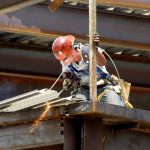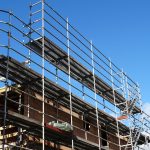Crafting an Impressive Cover Letter for Safety Engineer Positions
Navigating the intricate world of safety engineering requires not only technical expertise but also the ability to convey your qualifications effectively. A well-crafted cover letter can be your golden ticket to securing an interview. Here are some invaluable tips and examples to help you stand out in a competitive job market.
Understanding the Role
-
Know the Industry: Safety engineering spans various sectors, from construction to manufacturing. Tailoring your letter to reflect an understanding of the specific industry will demonstrate your commitment and knowledge. Research the company’s safety protocols and challenges they face. This insight can be woven into your narrative, showing that you’re not just a generic applicant.
-
Highlight Relevant Experience: In this field, practical experience is paramount. Whether you’ve conducted risk assessments, developed safety training programmes, or implemented safety management systems, make these experiences shine. Use specific examples that illustrate your impact. Instead of stating, “I improved safety protocols,” opt for, “I spearheaded a project that reduced workplace incidents by 30% within six months.”
Crafting the Content
-
Engaging Opening: Start with a hook. Perhaps a brief anecdote about a safety challenge you overcame or a statistic about workplace safety that resonates with you. This sets the tone and grabs the reader’s attention.
-
Showcase Your Skills: While technical skills are crucial, don’t underestimate the power of soft skills. Communication, teamwork, and problem-solving abilities are equally important. For example, you might say, “My ability to communicate complex safety regulations clearly has fostered a culture of safety within my previous teams, resulting in a 50% increase in compliance.”
-
Demonstrate Your Passion: Safety engineering isn’t just about following regulations; it’s about protecting lives. Convey your passion for creating safer environments. A sentence like, “I am driven by the belief that every workplace should be a safe space where employees can thrive,” can resonate deeply.
Formatting and Presentation
-
Professional Tone: Maintain a formal yet approachable tone throughout. Avoid jargon unless absolutely necessary, and ensure your language is clear and concise.
-
Keep it Brief: A cover letter should ideally be one page. This discipline forces you to distil your thoughts and present only the most compelling information. Aim for a balance of detail and succinctness.
Final Touches
-
Tailor Each Application: Personalisation is key. A generic cover letter is easy to spot. Ensure every application reflects your understanding of the specific company and role. A line such as, “I am particularly impressed by your commitment to sustainable safety practices, which aligns with my own values as an engineer,” can make a difference.
-
Proofread Diligently: Typos and grammatical errors can undermine your professionalism. Take the time to proofread, or even better, have a colleague review your letter. A fresh pair of eyes can catch mistakes you might overlook.
The Last Word
Your cover letter is your opportunity to showcase not just your qualifications but your personality and passion for the safety engineering field. By understanding the role, crafting engaging content, and presenting it professionally, you can create a compelling narrative that sets you apart from the competition. Always remember, CVPortal is here to provide you with an array of quality CV references to enhance your job application journey.


